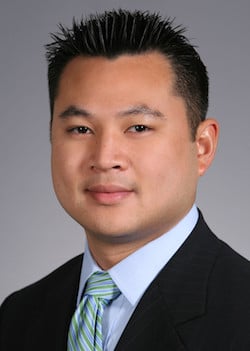Trading technology is undergoing a transformation, from a facilitator of human-based trading to near-fully automated trading.
The types of trading—algorithmic, high-frequency, electronic, quantitative—testify to the fact that trading has evolved into a hi-tech arms race, powered by fast, reliable technology for every facet of the trade cycle.
This puts a premium on finding the 'right' liquidity.
“Traders have grown accustomed to the contemporary market environment and have stopped searching for the next 'algo' or the next latest 'dark pool',” said Steve Hedger, managing director, trading and investment operations at Fifth Third Asset Management. “I am leaning on my senior traders to utilize their tenured skills and apply their art to source the best liquidity.”
Amidst seismic shifts in the trading landscape, high-speed connectivity and liquidity-seeking algorithms are the order of the day.
“The buy side looks for anonymity, liquidity, price improvement and costs,” said Richard Johnson, head of quantitative electronic services, Americas, at Societe Generale. “Dark pools are dark, so they should provide anonymity. The question then becomes what if I’m using a broker-designed algorithm that’s sending orders to multiple dark pools? Then it’s no longer anonymous, because there will be information leakage caused by my order becoming exposed to too many venues.”
AlphaY, SocGen’s internal liquidity pool, captures agency flow generated from the cash franchise, as well as flows from client-driven risk businesses and delta hedging activities in derivatives. As a result, AlphaY has been built with an emphasis on leveraging this internal liquidity over which it has complete control.
“When we’re designing algos, we need to make sure that the dark pools they’re accessing are anonymous, supplying good liquidity and provide either price improvement or some other kind of benefit,” Johnson said. “Brokers have to put intelligence around their algos to make sure their buy-side clients are not disadvantaged by HFTs and predatory trading practices.”
Dark is Good
The introduction of dark orders led to a widening of quoted spreads and an increase in trading costs, leaving depth, volume and volatility unaffected, according to a study by Capital Markets CRC, an Australian-based think tank that conducts research on market structure.
At the intra-day level, dark trading leads to decreased quoted spreads, increased depth, increased volume and to reduced trading costs and volatility.
While the possible presence of dark liquidity causes market participants to post visible quotes more carefully upon detecting dark executions, traders infer that dark liquidity is diminished and thus post quotes more aggressively.
For regulators contemplating market structure changes, “the implications are that dark pools foster price improvement, and the efficiency of the lit markets goes up as a result", said Michael Aitken, chief executive of Capital Markets CRC.
“All research suggests that high-frequency traders offer advantages, albeit with some problematic aspects,” said Aitken. “But on average they enhance the liquidity of the marketplace, so anything that infringes on that [such as a tax on message rates] is fundamentally inconsistent with regulatory mandates to promote efficiency.”
Fidelity Capital Markets, the institutional trading division of Fidelity Investments, late last year launched Block Liquidity Opportunity Cross, which goes by the acronym Blox, a new execution venue focusing on block trades, which was an extension of the company’s alternative trading system, CrossStream. Blox offers a safe venue to interact with a robust source of retail and channel order flow.
 Derrick Chan, vice-president, product development, Fidelity Capital Markets
Derrick Chan, vice-president, product development, Fidelity Capital Markets
“Information leakage is a key issue,” said Derrick Chan, vice-president of product development at Fidelity Capital Markets. “Why would I want to trade on a dark pool that provides some incremental price advantage if it’s going to increase my overall transaction costs? If it means it will worsen your overall execution quality, then you should give up that liquidity.”
Liquidity Profiling
Barclays Capital provides a liquidity profiling feature on its LX dark pool, which protects clients that are trading in the dark.
“It’s a sophisticated surveillance framework that protects clients from predatory trading activity in LX, the second-largest broker-dealer dark pool in the U.S.,” said William White, head of equities electronic trading at Barclays.
Based on measures of opportunistic behavior, such as the market impact and the ratio of talking versus providing liquidity, individual clients within the same traditional category do not behave the same.
“In fact, they behave very differently across a spectrum,” said White. “Within the institutional base, some are passive, most have a blend of passive and aggressive, and some are moving toward the aggressive side of the spectrum. By identifying aggressive behavior, we can take corrective action with clients who exhibit opportunistic behavior in the pool.”
Noted Hedger of Fifth Third: “I don't believe that the era of trading and crossing large blocks will come back into vogue because the new paradigm of a fragmented market has been established. History has taught me that change is always on the horizon and I don't think this new paradigm has that deep of roots. Lack of large block trading for institutions, tepid liquidity and a desire for brokers to capture large order flows from institutional buy-side traders feels like a recipe for future changes.”














